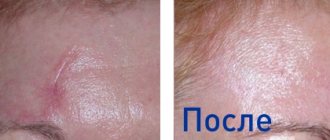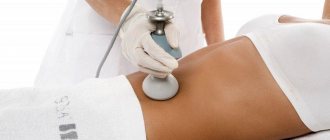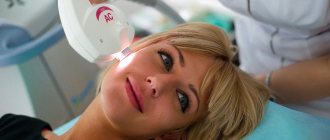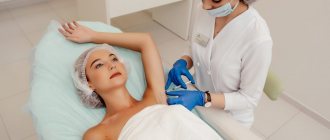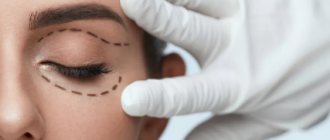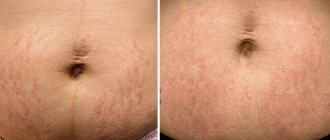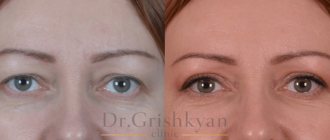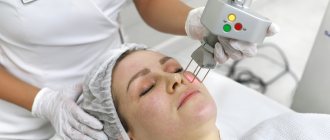Fresh skin around the eyes is one of the main indicators of youth. All celebrities first of all pay special attention to their eyes.
The metamorphosis of Nicole Kidman's face can be traced throughout the Cannes seasons. It is clear that before the red carpet, stars do maintenance in clinics, but in 2021 the actress clearly chose the wrong hands. It’s good that in 2021 the actress underwent more serious procedures for the upper and middle third of the face, and the results are obvious (or on the face). Young, fresh and natural looking.
Laser rejuvenation of the skin around the eyes is a technique that allows you to effectively correct age-related changes and postpone your acquaintance with plastic surgery for several years.
How does a laser solve such problems? What types of lasers exist and how to choose the right one? What is fractional eyelid photothermolysis? Does laser help with bags under the eyes, bruises and wrinkles? You will find answers to all these questions below.
But first, let's define what laser eyelid rejuvenation is.
What is laser eyelid rejuvenation and why is it called thermolifting of the eyes?
"Thermo" is a root meaning temperature. Due to the high temperature, the laser beam evaporates the tissue. “Lifting” is the rejuvenation and tightening effect that laser effects have. Therefore, laser procedures are often called thermolifting.
At the dawn of the development of laser technology, continuous areas of skin were treated with a laser. This procedure gave a good renewal effect, but required more than a month to recover.
Therefore, scientists have developed devices that scatter one beam into many small fractions: from 100 to 1,000. Thus, the laser acts on the skin selectively, and areas of untouched skin remain between the microzones of laser exposure. The process goes by different names - “fractional photothermolysis”, “fractional thermolysis of the eyelids”, “laser nanoperforation of the eyelids”. These are synonyms.
How is fractional laser beam produced?
Differences between a conventional laser beam (left) and a fractional one (right).
Essentially it is a microtrauma. And according to the laws of nature, trauma triggers a whole series of restorative reactions.
- the skin tends to “close” the channels and tightens.
Visually, this is manifested by a reduction in excess skin, an increase in its tone and the smoothing of wrinkles. The effect is comparable to that of surgical pinching blepharoplasty, eliminating up to 2 mm of excess skin. - stimulates neocollagenesis - the process of formation of new collagen and elastin.
The mechanism of skin lifting after fractional exposure.
Collagen is the reinforcing protein of our skin, which creates its frame.
The laser has a double effect on collagen.
On the one hand, after fractional exposure, collagen fibers are twisted into tight spirals and have an additional effect on skin contraction.
On the other hand, the laser stimulates the formation of new connective tissue.
Therefore, the pronounced effect of tightening, strengthening and smoothing the skin is noticeable immediately after the procedure and increases over the course of several months!
At Platinental we perform thermolifting for the skin around the eyes using the Eraser-C CO2 laser and the Asclepion Dermablate Effect erbium laser. They have differences.
Laser blepharoplasty of the upper eyelids
Although the laser is an excellent tool for bloodless incisions, it must not be overlooked that the thermal conductivity induced by the laser during surgery plays a significant role in the healing process of the scar, slowing it down.
The CO2 laser creates a zone of irreversible thermal damage (coagulation zone) along the wound edge, which results in delayed wound healing and less satisfactory scarring.
Therefore, skin incisions must be made with a blade. However, after the initial cuts with a scalpel blade are completed, a laser is widely used to perform the remainder of the skin peeling.
Skin flap detachment, which in the past was done easily, quickly and safely with a laser, has also been discontinued for the same reasons as skin incisions.
The laser beam produces high temperatures during its operation, which affects not only the edges of the skin incision. To avoid long healing and the formation of rough scars, sharp instruments such as a scalpel are currently used to cut the skin flap instead of a laser.
Currently, instead of removing a strip of the orbicularis oculi muscle, we make a laser incision in the “hernia” projection. As soon as a wide strip of skin is excised, a strip of muscle is removed.
Thus, two important amendments in the upper laser blepharoplasty technique can be distinguished, comparing the past and present procedure, which are as follows:
- It is preferable to perform a skin incision and detachment of a skin flap with a scalpel instead of a laser.
- Instead of removing a strip of the orbicularis oculi muscle, an incision is made into the muscle in the projection of the “hernia” using a defocused laser beam.
The rest of the dissection and fat removal is still performed with laser, bloodlessly, accurately and safely.
CO2 rejuvenation with Eraser-C laser
The Eraser-C fractional CO2 laser delivers powerful effects due to deep penetration to a depth of 200 to 1,000 microns. Essentially this is laser skin resurfacing, but fine settings of the fractional mode allow you to act as delicately as possible and use Eraser-C for delicate and thin eyelid skin. To minimize pain, the procedure is performed under anesthesia.
CO2 rejuvenation allows
- eliminate deep wrinkles, general sagging skin and crow's feet,
- remove excessive pigmentation,
- get rid of dark circles under the eyes,
- even out skin color,
- remove blood vessels – the so-called “spider veins”,
- make the skin tighten,
- remove bags under the eyes,
- remove sagging upper eyelid,
- make the tear trough less noticeable
Rehabilitation after CO2 exposure requires 7 to 10 days. The result lasts 1 - 2 years. If grinding is performed at higher parameters, the redness can last up to one and a half months. But the effect in this case is more lasting.
Types of operations performed with laser on eyelids
- lower (percutaneous subciliary). This look is aimed at the fair sex, who have a large amount of excess skin in the area above the organs of vision. As a result of percutaneous subciliary blepharoplasty, it is possible to remove intraorbital fat, as well as fatty hernias;
- transconjunctival. Women resort to it at a young age. This blepharoplasty is performed on the inside of the eyelid. Using a laser beam, it is possible to create a micro-incision through which excess hernias are removed. Correction of eye shape or size is not provided;
- upper eyelids. As a result of the operation, areas of skin that have an asymmetrical appearance are eliminated, and excess eyelid skin is also removed;
- circular. The peculiarity of this blepharoplasty is that both the lower and upper eyelids undergo changes. At the same time, their plasticity occurs.
- Asian eyes. This is when the eastern cut changes to a Caucasoid one. The correction includes parallel removal of excess fat in the upper eyelid, as well as excision of the epithelium.
- laser resurfacing of the periorbital area
Benefits of Fractional Laser Eye Rejuvenation
- Modern lasers have ultra-precise settings that allow you to act strictly at a given depth, necessary to solve the problems of your eyes.
- Fractional laser eye rejuvenation does not form a so-called demarcation zone - a pronounced difference between the treated and untreated areas.
- Thermolifting around the eyes is carried out only with partial disruption of the skin. This allows you to increase the depth of impact, enhance the intensity of regeneration and at the same time reduce the rehabilitation period to a matter of days.
Removal of expression wrinkles
You need to combat expression wrinkles comprehensively - with internal and external methods. The main procedure is botulinum therapy - injections of Botox, Dysport, Xeomin into the facial muscles involved in the expression of certain emotions: surprise, dissatisfaction, joy. Only a doctor can administer injections. They can be prescribed to patients from 20 years of age to very old age. The frequency of Botox and Dysport injections is twice a year.
Light superficial peelings also have a beneficial effect on smoothing the skin texture. They are good for shallow wrinkles. An additional plus is an even complexion and radiant skin.
Light laser rejuvenation, stimulating collagen synthesis, will have a good effect on the density and elasticity of the skin. This will also help prevent the appearance of wrinkles.
To ensure that your facial expressions do not leave noticeable marks, watch how you express emotions and how much your face is involved in this. Try to control yourself. It is also important to drink at least 2 liters of water per day. And it is advisable to spend more time in the fresh air. Dry, stuffy air and tobacco smoke dry out the skin and lead to the early formation of wrinkles and folds.
At the Marina Ryabus clinic, the French drug Dysport has been used for the correction of facial wrinkles for many years. Our patients see its effectiveness, safety, and natural results from injections. Dysport is also used to relieve muscle spasms - headaches, bruxism, neck and shoulder pain. Dysport is also used to reduce sweating activity (treatment of hyperhidrosis).
Reviews
Tatiana
I am happy to be among your guests at the clinic, I enjoy our communication, I am grateful for your super professionalism, for giving beauty and a sense of confidence in your professional actions, protection from “age-related changes”
